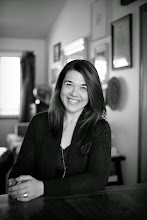Throughout this summer I hope to create a series of tutorials explaining how you can stretch your photography creatively, focusing on skills you can master with any camera and (when applicable) with free editing tools online.
This week I will walk you through the steps I took to create this series.
Location: Arrowhead Park
Time of Day: Early Evening
Quality of Light: Warm, Bright, Indirect- about an hour from the golden hour.
The rundown: We were walking through Arrowhead Park and the kids stopped to pick up stones near the water. I noticed that the water near the shore was dancing in the light with the gentle current, and immediately knew what I would do with it.
It was a perfect time to play with light, color, speed, and motion.
Because the light was glowing and bright, it brought out facets in the reflection on the surface of the water. There were awesome reflections of color from the trees on the bank and the clouds in the sky as well.
In the first set of shots I took, I played with faster shutter speeds (1/400+ on my Canon.) You can achieve faster shutter speeds on any camera (in good light) by using the Sports Mode. The water was moving, but with a faster shutter speed I can stop the motion.

With a slower speed and a steady hand, I capture motion. This is where you can really get creative- you can hold steady and capture the motion of the subject, and you can also mess around with moving the camera as well in certain motions, patterns, etc. It's digital. Experiment. For these, though, I held steady and let the water do the moving. In the second set of images, I played with slower speeds (1/40 and 1/60.) Here is an example:

Same image, different settings. That's a run-down on how to use motion and speed creatively. If you have questions, ask!
Now let's talk about color. You probably have several color settings in your camera. In addition to the color treatment adjustments white balance offers, you also most likely have a standard mode, a vivid mode, monochrome (black and white), and maybe more. More here. Some people like to keep their cameras in vivid, because this mode will saturate the colors more, and adds contrast. Go ahead and play with it!
I keep my Canon in Standard. Always. I teach people with all makes and models of cameras and there really is a huge difference between them when it comes to how they capture color. What I love about mine in Standard color mode is that it captures a low contrast, evenly-toned neutral image. It almost has a pastel appearance. I like this because, if I want more saturation or more contrast, I can bump those up manually later. I think it's obvious by viewing the photographs on my blog that I don't mess around with a lot of wacky post-processing, but I do fine-tune the saturation and contrast to my liking on nearly every image I post. Typically it's just a bump up a couple of notches (students usually can't see the difference between the original and edited version), but when I'm editing more abstract or artistic images, the difference is more dramatic. Either way, I want final control over the saturation and contrast.
It's playing with the saturation (how rich the colors are), color tones (adding heat or cooling down color) and contrast (adding definition) that can give you the results I'm about to post. Adjusting the exposure can change things up too (darken darks, lighten highlights, and overall lighting changes.) My camera, in Standard, recorded a low-contrast, neutral image that I could then adjust myself. It is surprising the many colors that were "in there" that I just needed to pull out (I knew they were there because I could see them in the trees and sky at the time.) I will note, too, that I underexposed these images slightly, to protect the rich colors from getting washed out in the originals.
So again, using only the exposure, color and saturation, and contrast sliders in Google+ Creative Kit, I got so many different results.
Here is my straight out of camera (SOOC) high-speed image:

Here are the variations:



Now here are my two slower speed SOOC images:


And some variations:




What I love about these slower speed images is the impressionistic "brushwork" created through the use of speed and motion, as well as the texture it creates with the water and color- similar to an oil painting.
You can experiment with shutter speed and motion in many ways. Try this out with moving people, birds, or even traffic. Have fun, and share your images with me if you try it. It's never too late to try something new.




2 comments:
I'll be following these tutorials for sure. It's already helped me...thanks for sharing!
I LOVE the 2nd edited photo of the high-speed image. For some reason, it looks like really cool stained glass> Thanks for sharing the tips! :)
Post a Comment